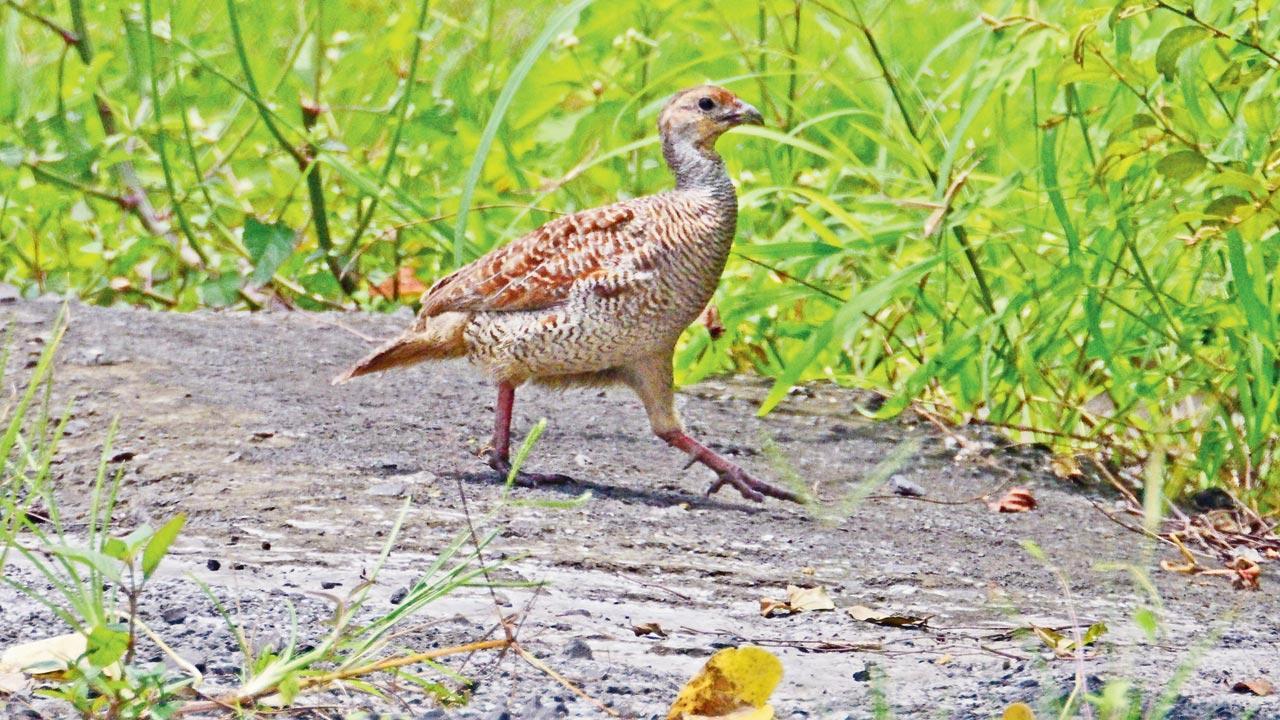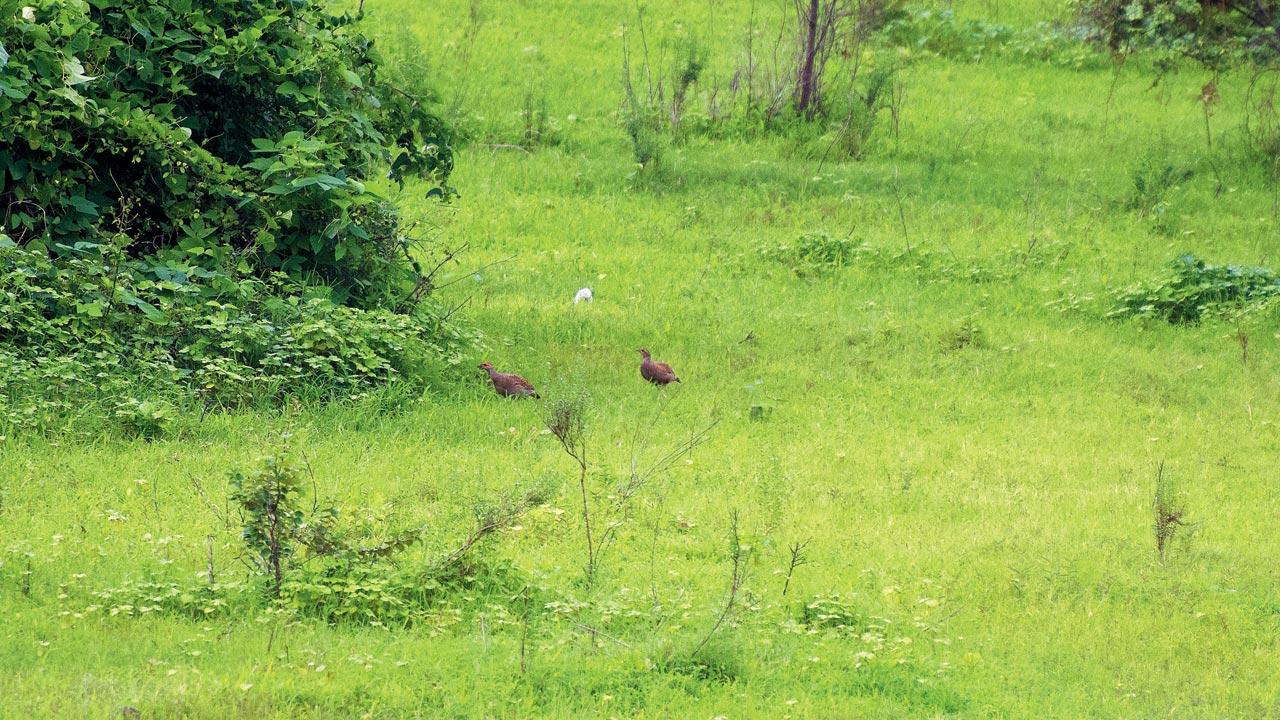The bird had not been sighted across the moist western coastal region and Western Ghats

A grey francolin in Navi Mumbai. Pic/Sunjoy Monga
In what can be termed a very rare sighting, wildlife photographer Seema Tania and environmentalist and naturalist Sunjoy Monga spotted a grey francolin in Navi Mumbai.
ADVERTISEMENT
The grey francolin (Francolinus pondicerianus) belongs to the pheasant family or Phasianidae. This large group of heavy-built, ground-living birds includes junglefowl, turkeys, chickens, quails, and of course, our national bird, the peacock.
Monga told mid-day, “While the grey francolin is widespread across most of peninsular India, it has not been reported across much of the moist western coastal length as well as the Western Ghats. We have just a couple of sporadic reports from around Datiware (about 100 km north of Mumbai) dating to the late 1990s. It has been sighted on the plateau above the Sahyadri Hills, in the open terrain east of Malshej Ghat and Lonavala-Khandala.”
 Grey francolins in Navi Mumbai. Pic/Seema Tania
Grey francolins in Navi Mumbai. Pic/Seema Tania
In recent weeks, Tania and Monga have been documenting the presence of this bird in the Uran-Navi Mumbai region, and last week they managed to get a few images as well.
It was Tania who first spotted the bird.
“It confirms the presence of this species for the first time in this part of the North Konkan, which is so close to Mumbai. It is typically a bird of dry terrain and, like most members of this bird group, is a skulker, keeping to grass and scrub cover. The sighting of this bird is an interesting addition to the region’s avifauna.” Monga stated.
Also Read: Mumbai: No fresh meat for animals in SGNP, Mumbai zoo amid Lumpy Skin Disease
The naturalist also said that he has been observing over the past few years that the loss of vast extents of wetlands in the Uran-Navi Mumbai region and the resultant emergence of grass and scrub terrain have been slowly altering ecological dynamics, with several terrestrial species having been sighted more frequently than they had been.
“It is quite possible the grey francolin too may have shifted for this reason in very recent times though the present numbers seem to be extremely low,” he said.
1990s
The time when the birds were spotted around Datiware
 Subscribe today by clicking the link and stay updated with the latest news!" Click here!
Subscribe today by clicking the link and stay updated with the latest news!" Click here!







